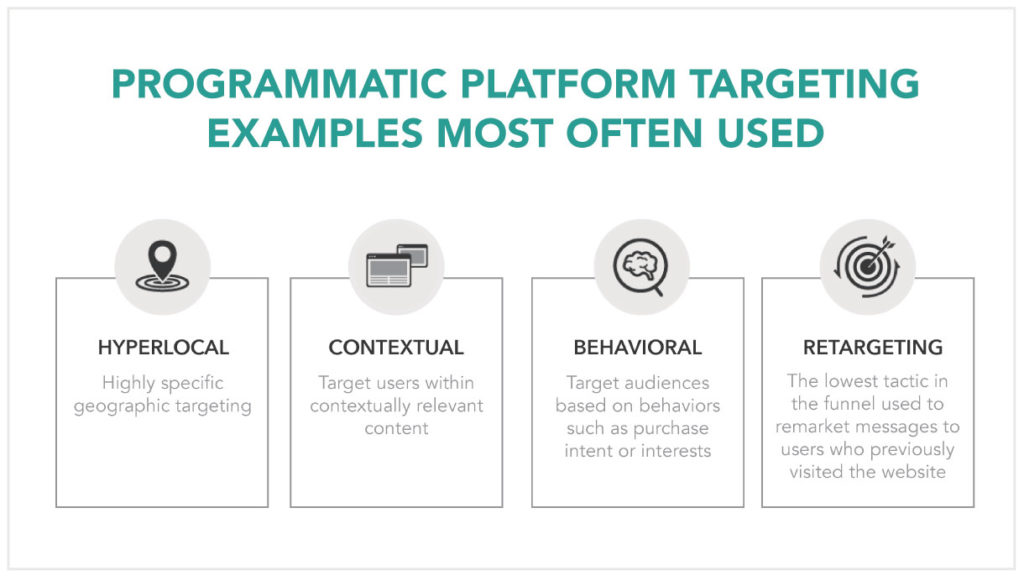Programmatic advertising is set to represent about 88% of all display ads purchased in the US in 2021. The use of programmatic as a paid advertising strategy has steadily grown over the last five years. As the exchanges and platforms have gotten better and the capabilities more refined, it has become one of the more cost effective means of expanding paid advertising strategies.
What is Programmatic Advertising?
Programmatic advertising is the automated buying and selling of online advertising. This system uses algorithmic software to collect and analyze real-time data and identify the best audience and web site for your display ad. That ad then gets served up to the site user in real time.
With programmatic advertising, you can leverage not only display but also video, mobile, audio and other channel ad capabilities. Targeting and machine learning can be leveraged for increased efficiency and return.
It can be a little overwhelming. That’s normal.
While there is value in finding the right platform with all the bells and whistles for your needs, the greater need is finding people with the strategic and technical skills to navigate the planning, development and management of a programmatic campaign. While it aligns well with traditional paid advertising (think Google, Bing, and Facebook), it’s not managed or optimized the same.
Programmatic Advertising Benefits
Programmatic platforms or exchanges bring together advertisers and website owners to create a marketplace for buying ad space around the internet. Leveraging this strategy gives a company a much broader reach at a relatively reasonable price. You can also have greater insight into where your ad is showing up and how it’s performing.
Done right, programmatic advertising elevates your overall digital strategy performance. As a marketing strategy, programmatic ad placements can bolster overall brand awareness and help you reach hard to find audiences.
Targeting Capabilities with Programmatic
One of the greatest values of programmatic advertising is the capabilities of these platforms to seek out hyper-specific audience segments and share your brand or offer with them.

Today’s businesses are even more vigilant about where their logo appears and who they associate their name and dollars with. Corporate consciousness is powerful. Marketing teams know that the ability to strategically and thoughtfully place yourself around the web is a powerful way to create brand alignment. With programmatic advertising platforms, managers are able to carefully include or exclude brand safety filters, content categories, or keywords from leading third parties. You can also create customized Blacklists. Values-focused companies can carefully ensure they exclude sites associated with topics such as crime, hate speech, terrorism, tobacco, gambling, and more.
Should You Try Programmatic Advertising?
Companies can often be unsure about whether to make the financial investment in programmatic advertising. You should look to add programmatic into a strategy when you are trying to meet the following marketing needs:
- You have hyper-specific contextual or behavior audience targets.
- You want to purchase ads on specific brand aligned or customer aligned web properties.
- You are driving customers to specific offerings or services.
- You want to lift overall brand exposure and website traffic.
Getting Started with Programmatic Advertising
It’s important to know the capabilities and complexities of programmatic advertising targeting before just jumping in. As an agency, we are fully equipped with a partner platform and the resources to set up clients for a positive return from a programmatic campaign. Reach out to our paid team to learn more or download our quick one-sheet on the basics.

